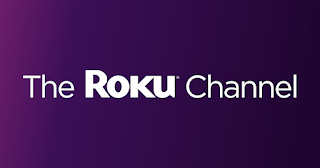For years, some of my online friends have suggested ways to improve the college football playoffs. To be clear, we're talking about Division 1-A/FBS, since Division 1-AA/FCS has had a championship since they split Division 1 football in 1979.
Our idea has been to have a 16 team playoff. Every conference champion would automatically qualify. Let's be clear, all conference champions, not just the self-proclaimed Power 5. The field of 16 would be filled in with the best teams that didn't win a conference championship.
We've been calling for this since the BCS days, and if they had done this, a lot of the conference realignment would not have happened. The college football landscape would be very different.
In a couple of years, the field of four will expand to 12. It's a good step, but I think it should include all conference championships. Winning a conference championship is a big deal. Winning the SEC is a big deal. Winning the MAC is a big deal. Not as big a deal, but still, it's a major college football conference championship. In my mind, they've earned something special, and a spot in the playoffs would be the proper reward.
Once you have more than eight teams involved -- such as the upcoming change to 12 -- you have four rounds. The season won't last any longer having 16 teams than 12 teams. The only thing 12 does is give 4 teams a bye, and leave out four conference champs.
Having said all that, the College Football Playoff Committee announced the four team field yesterday afternoon:
- Georgia
- Michigan
- Texas Christian
- Ohio State
Two of those are conference champions, one is a conference runner up, and one didn't make the conference championship game. So, eight conference champions were left out. Our plan of a field of 16 would solved that as well.
So, what would the playoffs look like if our plan was in place? First, let's see what the 12-team version that starts in a couple of years looks like.
- Georgia (SEC)
- Michigan (Big Ten)
- Clemson (ACC)
- Utah (Pac 12)
- Texas Christian
- Ohio State
- Alabama
- Tennessee
- Kansas State (Big XII)
- Southern California
- Penn State
- Tulane (American)
In the upcoming plan, the first four teams would receive a bye, and the other eight would play each other, with 5 vs 12, 6 vs 11, 7 vs 10, and 8 vs 9.
This is actually a good start. But, if you want it done right, here is our playoff field:
- Georgia (SEC)
- Michigan (Big Ten)
- Clemson (ACC)
- Utah (Pac 12)
- Kansas State (Big XII)
- Tulane (American)
- Troy (Sun Belt)
- Texas-San Antonio (Conference USA)
- Fresno State (Mountain West)
- Toledo (MAC)
- Texas Christian
- Ohio State
- Alabama
- Tennessee
- Southern California
- Penn State
That seeds the conference champions first, followed by the non-conference champions. This is in line with how the NFL does it, and how the byes in the CFP 12-team works.
Some critics of our plan over the years don't like the MAC or Mountain West teams ranked higher than, say, Ohio State. I don't agree. I think winning a conference should give you an advantage. But, if you prefer to have non-champions above some conference champions, here is that seeding:
- Georgia (SEC)
- Michigan (Big Ten)
- Texas Christian
- Ohio State
- Alabama
- Tennessee
- Clemson (ACC)
- Utah (Pac 12)
- Kansas State (Big XII)
- Southern California
- Penn State
- Tulane (American)
- Troy (Sun Belt)
- Texas-San Antonio (Conference USA)
- Fresno State (Mountain West)
- Toledo (MAC)
I prefer the former, but if you want to do it that way, I'm okay with it. I just want all the conference champs involved. They did something great, and should be rewarded with a chance to win it all.
What does all this have to do with streaming? Well, other than that's how I watch all my games, nothing specific to streaming. But as a streamer, I appreciate the fact that I can watch any post-season game I want. My Streaming Life is good.







